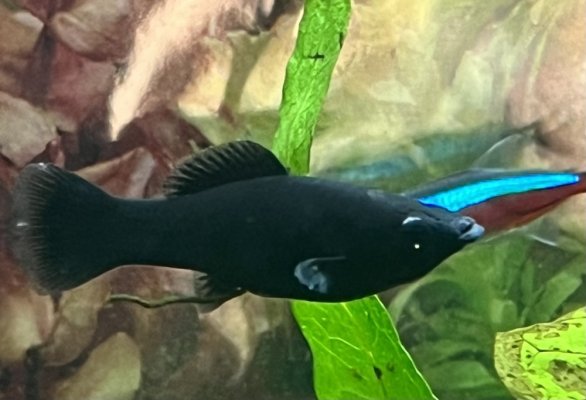Hi, I brought home 3 new Mollies from my LFS yesterday. I stupidly didn’t quarantine as I have not had problems from this store before and it has a great reputation locally. However, as soon as I released them into the tank I noticed a white patch protruding above the black female’s eye. I’m a worrier and not sure if I’m panicking over nothing or should I take it back to the shop as I think it could be a fungus? I’ve attached a photo.
As the fish is brand new I don’t know it’s usual behaviour, but it seems to be eating/swimming fine, not hiding/scratching/shimmying and as you can see the poop and fins looks normal.
Tank has been up and running since November, 200 litres, PH 7.2, ammonia 0, nitrites 0, nitrates currently 10, I do a change at 15 -20. This tank is usually really stable and I’m gutted I may have introduced something into it through being too eager to get a new fish in!
Any thoughts on what this is and how to treat if necessary please?
As the fish is brand new I don’t know it’s usual behaviour, but it seems to be eating/swimming fine, not hiding/scratching/shimmying and as you can see the poop and fins looks normal.
Tank has been up and running since November, 200 litres, PH 7.2, ammonia 0, nitrites 0, nitrates currently 10, I do a change at 15 -20. This tank is usually really stable and I’m gutted I may have introduced something into it through being too eager to get a new fish in!
Any thoughts on what this is and how to treat if necessary please?

